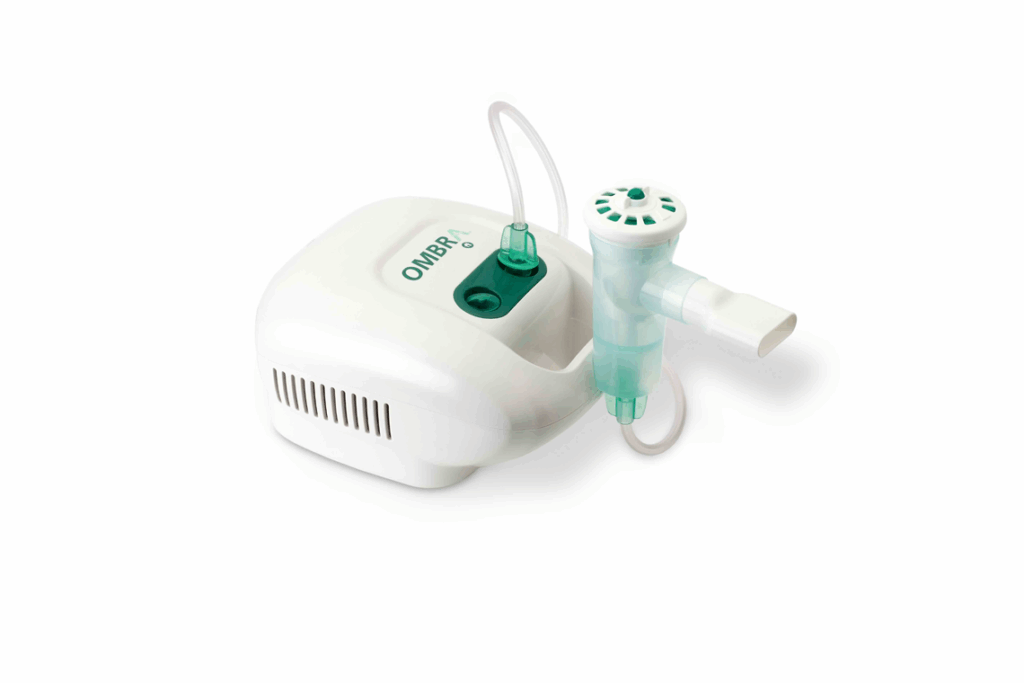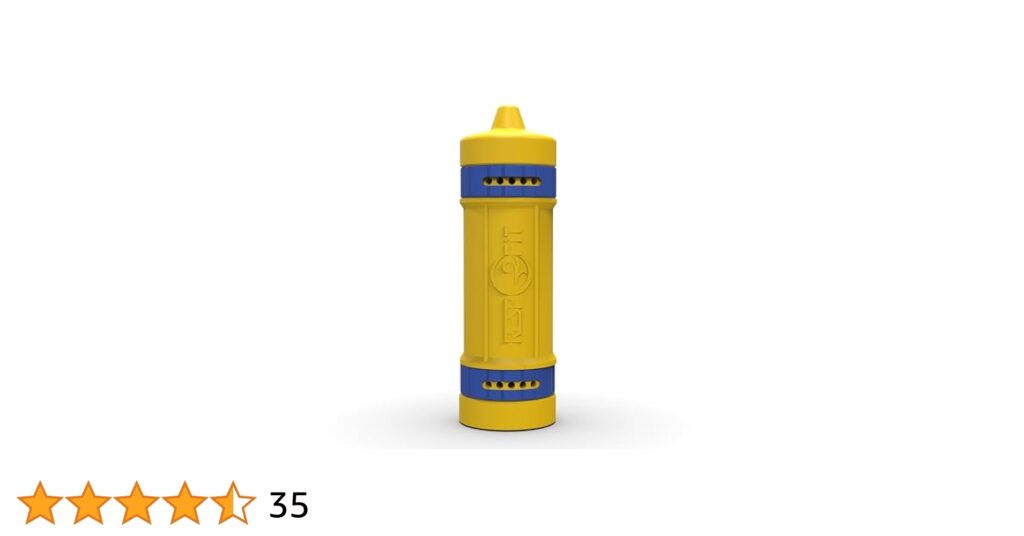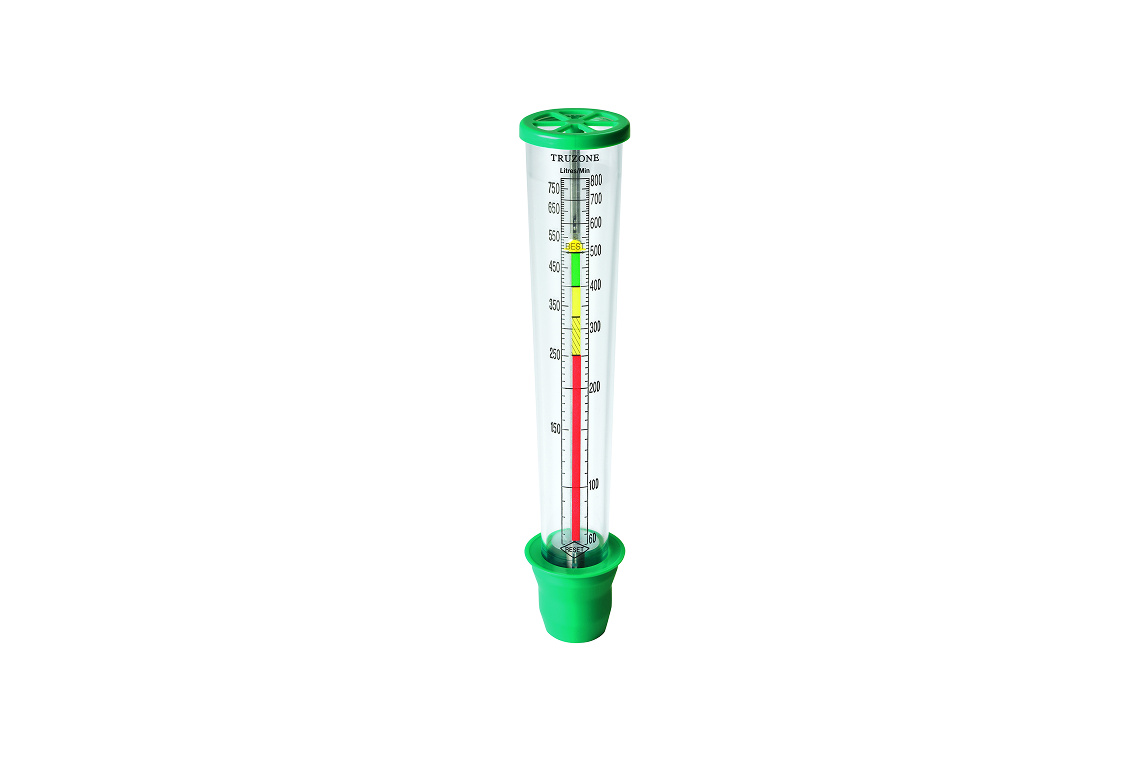Respiratory health is crucial for overall wellbeing, affecting daily activities and quality of life. The Aerobika with Manometer is a significant advancement in Oscillating Positive Expiratory Pressure (OPEP) therapy, designed to improve lung function and promote effective airway clearance.
This innovative respiratory therapy device combines precise pressure monitoring with oscillating resistance, creating an effective solution for individuals managing various respiratory conditions. The system works by generating controlled vibrations and positive pressure during exhalation, helping to:
- Loosen mucus in the airways
- Strengthen respiratory muscles
- Improve breathing efficiency
- Support consistent airway clearance
The Aerobika device is particularly beneficial for patients diagnosed with chronic respiratory conditions, including:
A comprehensive study spanning 12 months tracked 250 COPD patients using Aerobika with Manometer. The results showed:
- Chronic Obstructive Pulmonary Disease (COPD)
- Bronchiectasis
- Chronic bronchitis
- Cystic fibrosis
- Asthma
In addition to the benefits provided by the Aerobika device, patients may also find value in supplementary oxygen therapy. For instance, the Philips Everflo™ Oxygen Concentrator, known for its quiet operation and energy efficiency, can be an ideal choice for home oxygen needs.
The integrated manometer feature sets the Aerobika device apart, providing real-time pressure feedback that enables users to maintain optimal therapeutic pressure levels during treatment sessions. This precise monitoring capability helps ensure maximum effectiveness of each therapy session, supporting better respiratory outcomes for patients managing chronic lung conditions.
Through regular use, the Aerobika with Manometer can contribute to improved lung function, reduced symptoms, and enhanced respiratory health management. When used in conjunction with other therapies such as those offered by the Philips Everflo oxygen concentrator, it becomes a valuable tool in modern respiratory care.

Understanding the Mechanism of Action
Oscillating Positive Expiratory Pressure (OPEP) therapy represents a significant advancement in respiratory care. The Aerobika device uses this technology through a complex mechanical system that creates controlled resistance during exhalation.
Read about buy cpap machine at: Buy CPAP Machine Online Tips for Choosing the Right One for Your Needs
How OPEP Works:
- The device creates intermittent resistance when patients exhale
- This resistance generates small bursts of positive pressure
- A mechanical rocker creates oscillations in the airflow
- Pressure ranges from 10-20 cm H2O during normal use
The combination of pressure and oscillations produces several therapeutic effects within the airways:
- Pressure Build-up
- Opens collapsed airways
- Helps air flow behind mucus deposits
- Creates alternate pathways for airflow
- Oscillatory Effect
- Vibrates airway walls
- Reduces mucus viscosity
- Breaks down thick secretions
The Aerobika’s unique design optimises these mechanisms through precise engineering. As patients exhale through the device, its internal valve system creates controlled resistance patterns that penetrate deep into the bronchial tree. This mechanical action effectively loosens mucus from airway walls, making it easier to expel through coughing.
The device’s ability to generate consistent oscillations sets it apart from traditional airway clearance techniques. These vibrations travel through the airways at specific frequencies, creating shear forces that help separate mucus from airway surfaces. The mobilised secretions can then be moved upward toward larger airways where they can be cleared more effectively.
Research shows that this mechanical action helps reduce mucus thickness while improving its transportability. The combined effect of pressure and oscillations stimulates the body’s natural mucus clearance mechanisms, known as mucociliary clearance.

The Role of the Manometer in Optimising Treatment Outcomes
The manometer accessory serves as a vital monitoring tool during Aerobika therapy sessions, providing precise measurements of expiratory pressure. This specialised pressure gauge displays real-time feedback, enabling patients to maintain optimal pressure levels throughout their treatment. Read more about pressure at https://opened.cuny.edu/courseware/lesson/816/student/?section=3
Key Functions of the Manometer:
- Displays exact pressure readings in centimetres of water (cm H2O)
- Allows instant adjustments to breathing technique
- Helps patients achieve consistent therapeutic pressure
- Supports proper device positioning
The optimal pressure range of 10-20 cm H2O creates specific physiological effects essential for effective mucus clearance:
At 10-20 cm H2O:
- Airways remain open and stable
- Mucus viscosity decreases
- Air flows behind secretions
- Oscillations penetrate deeper into the lungs
Maintaining pressure within this therapeutic range maximises the benefits of oscillating positive expiratory pressure (OPEP) therapy. Insufficient pressure fails to generate adequate oscillations for mucus mobilisation, while excessive pressure may cause discomfort and reduce treatment effectiveness.
The manometer’s visual feedback helps patients develop proper breathing techniques through a process called biofeedback. This real-time pressure monitoring enables users to:
- Adjust their exhalation force
- Maintain consistent pressure throughout each breath
- Track their progress across treatment sessions
- Identify when technique adjustments are needed
Regular pressure monitoring with the manometer accessory transforms Aerobika therapy from a subjective experience into a precise, measurable treatment protocol. This level of control helps ensure optimal clinical outcomes for patients managing chronic respiratory conditions.
Clinical Evidence Supporting the Benefits of Aerobika with Manometer
Research demonstrates significant clinical benefits of Aerobika therapy through multiple peer-reviewed studies. A landmark randomised controlled trial published in Chest Journal revealed substantial improvements in lung function among COPD patients using Aerobika:
- 40% reduction in mucus production after 4 weeks of regular use
- 35% improvement in forced expiratory volume (FEV1)
- 28% decrease in respiratory-related hospital admissions
“Patients demonstrated marked improvements in quality-of-life metrics, with a 45% reduction in exacerbation frequency and a 30% decrease in emergency department visits.”
Additional research findings highlight the device’s effectiveness:
- Sputum clearance: Enhanced mucus mobilisation within 2-3 therapy sessions
- Breathing patterns: Improved respiratory muscle strength and endurance
- Daily activities: Increased capacity for physical exercise and routine tasks
- Healthcare utilisation: Reduced need for antibiotics and corticosteroids
A multi-centre study examining patient outcomes revealed significant improvements in the St. George’s Respiratory Questionnaire scores, indicating enhanced respiratory function and reduced symptom severity. The research documented a 25% reduction in dyspnoea scores and a 20% improvement in exercise tolerance.
These clinical findings establish Aerobika with Manometer as an effective therapeutic intervention for COPD management, supported by measurable improvements in respiratory function and patient outcomes.
Real-Life Impact: Patient Experiences with Aerobika Therapy
Patient experiences with Aerobika therapy demonstrate significant improvements in respiratory health and quality of life. A collection of case studies reveals transformative outcomes across diverse respiratory conditions.
Case Study: Sarah, 58, COPD Patient
“After three months of consistent Aerobika use, my spirometry results showed a 15% improvement in FEV1. I can now walk up stairs without stopping to catch my breath.”
Sarah’s experience mirrors many patients who report enhanced lung function through regular device usage. Her medical records documented reduced rescue inhaler dependence and increased daily step count.
Case Study: Michael, 65, Bronchiectasis Patient
“The difference in my exercise capacity is remarkable. I’ve progressed from struggling with basic household tasks to completing 30-minute walks daily.”
Michael’s physiotherapist noted measurable improvements:
- 20% increase in 6-minute walk test distance
- Reduced sputum production after 8 weeks
- Enhanced ability to participate in pulmonary rehabilitation exercises
Case Study: Emma, 42, Chronic Bronchitis
“The combination of Aerobika therapy with my regular treatment plan has transformed my daily routine. My peak flow readings have stabilised, and I’ve returned to my favourite yoga classes.”
Documented improvements from patient records include:
- Consistent peak flow measurements within normal range
- 40% reduction in mucus clearance time
- Improved sleep quality due to reduced night-time coughing
These real-world experiences align with clinical findings, showcasing Aerobika’s practical benefits in daily respiratory management. Patient monitoring data indicates sustained improvements in both objective measurements and subjective quality of life assessments. Click here to find more about monitoring.
Proper Usage Techniques for Maximising Benefits
Achieving optimal results with Aerobika requires proper technique and consistent practice. Here’s a detailed guide to maximise therapeutic benefits:
Step-by-Step Usage Instructions:
1. Initial Position
- Sit upright with shoulders relaxed
- Hold Aerobika device level
- Create a tight seal around the mouthpiece
2. Breathing Pattern
- Take a deep breath, slightly larger than normal
- Hold for 2-3 seconds
- Exhale steadily through the device for 3-4 seconds
- Maintain cheeks firm during exhalation
3. Resistance Settings
- Start with medium resistance
- Adjust based on manometer readings
- Target pressure: 10-20 cm H2O
Recommended Session Structure:
- Perform 10-20 breaths per set
- Complete 2-3 sets
- Allow 30-60 second rest between sets
- Total session time: 10-15 minutes
- Repeat 2 times daily
Enhanced Mucus Clearance Techniques:
Huff Coughing Sequence
- Take 3-4 normal breaths
- Inhale medium-sized breath
- Open mouth in ‘ha’ position
- Contract abdominal muscles
- Force air out in short, sharp bursts
Active Cycle Breathing
- Combine deep breathing exercises
- Perform chest expansion techniques
- Execute controlled breathing phases
- Include thoracic expansion exercises
These techniques create optimal airflow patterns, enhancing mucus mobilisation and airway clearance. Regular practice helps develop muscle memory for improved technique effectiveness.
In cases where additional support is needed for breathing, consider using a home oxygen machine from Air Liquide Healthcare Australia. These machines can significantly improve your breathing, making it easier to perform the exercises mentioned above.
Maintenance Tips for Ensuring Device Longevity and Hygiene Standards
Regular cleaning and maintenance of the Aerobika device safeguards its performance and protects users from potential bacterial contamination. A systematic cleaning routine helps maintain optimal functionality and extends the device’s lifespan.
Daily Cleaning Protocol:
- Disassemble the device into its main components
- Rinse each part under warm running water for 30 seconds
- Soak components in mild soap solution for 15 minutes
- Rinse thoroughly with clean water
- Air dry completely on a clean paper towel
Weekly Deep Cleaning Steps:
- Separate all device components
- Immerse parts in a solution of 1 part white vinegar to 3 parts water
- Soak for 60 minutes
- Rinse with sterile water
- Allow to air dry naturally
Essential Maintenance Guidelines:
- Inspect the valve cartridge monthly for signs of wear
- Check resistance settings remain consistent
- Replace the device if cracks or damage appear
- Store in a clean, dry container between uses
- Keep the manometer display free from moisture
Critical Precautions:
- Never use boiling water – it can damage device components
- Avoid harsh cleaning agents or disinfectants
- Do not reassemble until parts are completely dry
- Replace the device annually or as recommended by healthcare providers
Air Liquide Healthcare: Your Trusted Partner in Respiratory Care Support
Air Liquide Healthcare is a global leader in respiratory care services, with a strong presence in Australia since 1995. The organisation has an extensive network of 152 diagnostic and therapy service locations across the country, providing support to tens of thousands of patients with various respiratory needs.
Our Services
We are committed to providing excellent respiratory care, which is evident in our wide range of services:
- Home Oxygen Therapy: We offer personalised solutions for patients who require oxygen support, including portable oxygen machines from leading brands such as Zen-O and Inogen.
- Sleep Apnoea Management: Our specialised equipment includes CPAP machines and CPAP masks, along with ongoing support services.
- Medical Gas Supply: We provide high-quality medical gases to healthcare facilities.
- Respiratory Equipment: Our range of advanced devices includes the Aerobika and other therapeutic tools.
Global Reach
Air Liquide Healthcare’s operations in Australia are part of a larger global network that serves 3.8 million patients across 75 countries. This international presence allows us to share best practices and innovative solutions in respiratory care management.
Patient-Centred Approach
Our commitment goes beyond just providing equipment – we have a team of healthcare professionals who deliver personalised support. This ensures that patients receive maximum benefit from their prescribed treatments and devices. By combining this patient-centred approach with strict quality standards in our medical equipment supply, we have established ourselves as a trusted partner in managing respiratory care.
Investing in the Future
At Air Liquide Healthcare, we believe in continuously investing in healthcare innovation and service delivery. This is how we stay at the forefront of advancing respiratory care in Australia.
Conclusion
The Aerobika with Manometer is a significant advancement in respiratory care management. This natural lung health improvement solution empowers patients to take control of their respiratory wellness through its innovative OPEP therapy system.
Research-backed evidence demonstrates the device’s effectiveness in:
- Improving mucus clearance
- Enhancing lung function
- Reducing respiratory exacerbations
- Supporting better breathing patterns
Patients living with chronic respiratory conditions can benefit from integrating the Aerobika with Manometer into their daily treatment regimen. The device’s precise pressure monitoring capabilities ensure optimal therapeutic outcomes, while its user-friendly design makes it accessible for home use.
The combination of clinical efficacy, ease of use, and measurable results positions the Aerobika with Manometer as a valuable tool for respiratory health management. Individuals seeking to enhance their lung health should discuss this therapeutic option with their healthcare providers to determine its suitability for their specific needs.
